NEB ambition
The ultimate ambition of the New European Bauhaus is to achieve transformation. To do this, the NEB Compass has identified specific levels of ambition that outline the desired outcomes for each of the NEB values.
The ultimate ambition of the New European Bauhaus is to achieve transformation. To do this, the NEB Compass has identified specific levels of ambition that outline the desired outcomes for each of the NEB values.
These areas refer to the five key domains of intervention that CrAFt's New European Bauhaus Impact Model considers essential for guiding and evaluating complex urban initiatives.
The participation level refers to the degree or extent to which individuals or groups are actively involved or engaged in a particular activity, project, or process. It assesses the depth of their involvement, contributions, and commitment, ranging from minimal or passive participation to active and dedicated participation.
The New European Bauhaus (NEB) aims to promote the values of sustainability, aesthetics, and inclusion in the design and transformation of urban spaces. It emphasises the integration of environmental, social, and economic considerations to create harmonious and innovative living environments.
According to the Smart City Guidance Package, there are seven stages to plan and implement smart city projects. These stages propose a logical and coherent roadmap for city initiatives involving many stakeholders.
Filipa Corais is an architect, urban planner and head of mobility at the Municipality of Braga, Portugal. Her passion for sustainable mobility, alongside her drive to excel at her work, propelled her—three years ago—to study for a PhD at the School of Architecture at the University of Minho and Lab2PT & MIT-Portugal to delve into promoting sustainable mobility through a research-action approach.
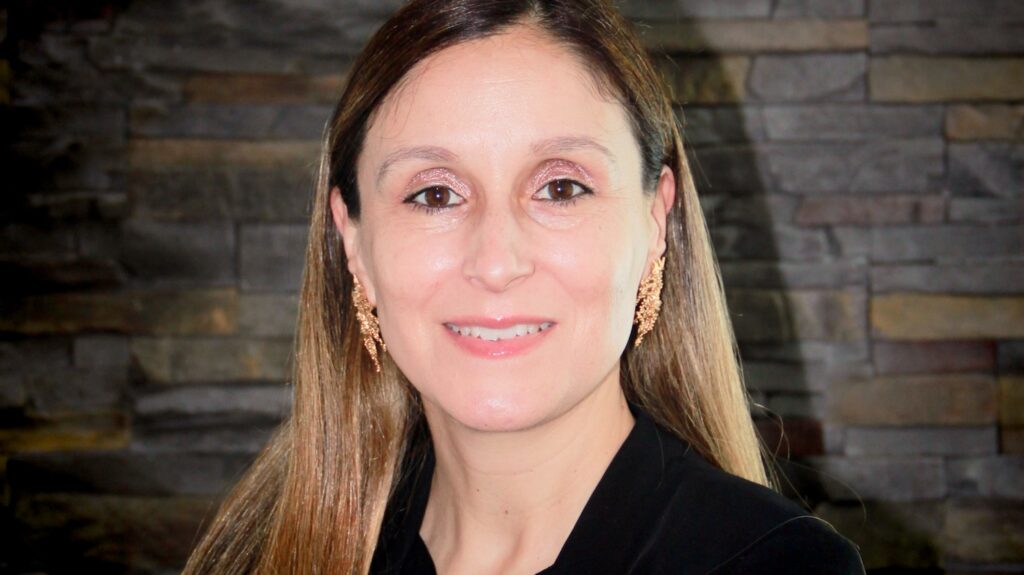
Filipa’s dual role as a practitioner and researcher allows her to blend theory with practice seamlessly. She applies her research findings to real-world settings and learns from these applications to refine her work at the Municipality. Believe it or not, Filipa is known for her dedication to her family outside of her work and studies. She recognises that she thrives on challenges and enjoys juggling multiple tasks.
Filipa’s primary motivation for working in sustainable mobility is her desire to promote sustainability in the mobility sector, contribute to public health and improve the quality of life in Braga. This motivation has been constant throughout her career, starting with her work in urban planning and now focusing on sustainable urban mobility.
For Filipa, achieving Portugal’s decarbonisation targets by 2050 requires a significant shift in societal behaviours and attitudes and a redesign of public spaces to favour pedestrians. In this country—where cities have traditionally favoured individual cars and around 70% of the population uses cars daily—Filipa faces the challenge of shifting societal attitudes toward sustainable mobility. Her work, therefore, involves implementing social innovation methodologies to raise awareness and educate the local population about the urgent necessity for sustainable mobility.
A significant part of her efforts is directed toward the school community, where she sees parallels with previous initiatives to promote recycling among children. By engaging young people, she hopes to create ambassadors for sustainable mobility, much like the successful recycling campaigns in the past.
Filipa is currently immersed in her fourth year of a PhD program, with a thesis titled “City Walking Towards 2050. Braga as a Laboratory for a Resilient and Sustainable Urban System”. Her research aims to develop and evaluate a model that seeks to accelerate behavioural change towards sustainable urban mobility, emphasising the physical transformation of public spaces and the societal engagement necessary for cultural change.
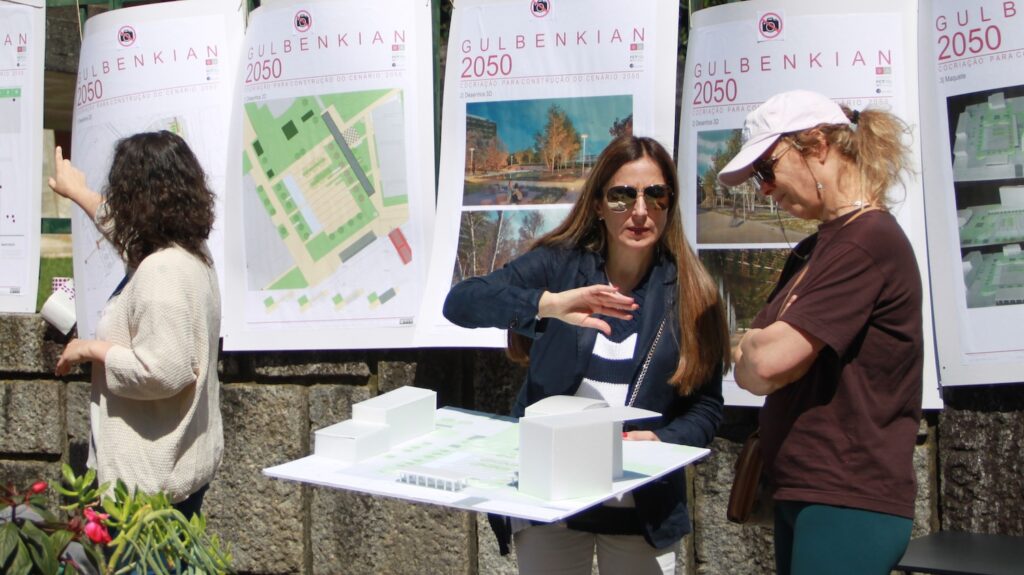
The core of her thesis is built on three conceptual pillars that focus on long-term sustainability goals: Transition Management, Urban Acupuncture and Trans Theorical Behaviour Change. By setting a desired scenario for 2050, Filipa works backwards to establish short-term milestones, creating a roadmap for gradual but impactful transformation. Her approach involves co-creating small-scale projects—her Transition Experiments—with the community, ensuring public buy-in and practical relevance.
The main case study for her thesis is the Calouste Gulbenkian area in Braga, strategically chosen for its proximity to the city centre and the presence of a school. This area is slated for a significant transformation designed to prioritise pedestrians and revitalise green spaces, aiming to restore the natural continuity that existed 30 years ago.
Filipa approached the case study using a mixed-methods strategy involving a cyclical process of action and research. This allowed for the preparation of the scenario for action and the evaluation of the case study at both the beginning and the end of the social experiment.
She applied an action research model that integrated various research techniques, such as interviews, surveys, counts, direct observation, and focus groups, with action methodologies, including project techniques and the Transition Management approach (Transition Arenas and Transition Experiments). This was implemented in a living laboratory setting, following a “learning by doing” philosophy.

In her role as head of mobility at the Municipality, Filipa applies her research findings directly, implementing proposed actions at the city level and learning from these real-world applications. This action-research methodology allows for a dynamic feedback loop between her academic work and practical municipal projects.
The challenge in Braga is significant. With a population of 200,000, 70% rely on cars for their daily commute. Filipa’s ambitious goal is to reverse this situation, promoting cycling and walking, which currently account for less than 1% and about 20% of daily commutes, respectively.
Filipa’s approach involves two main elements: creating a transition arena and implementing transition experiments. Transition experiments are practical tests designed to evaluate and promote sustainable changes in the city. For Filipa’s case study in the Calouste Gulbenkian Quarter in Braga, she coordinated three main transition experiments based on the proposals made in the Transition Arena:
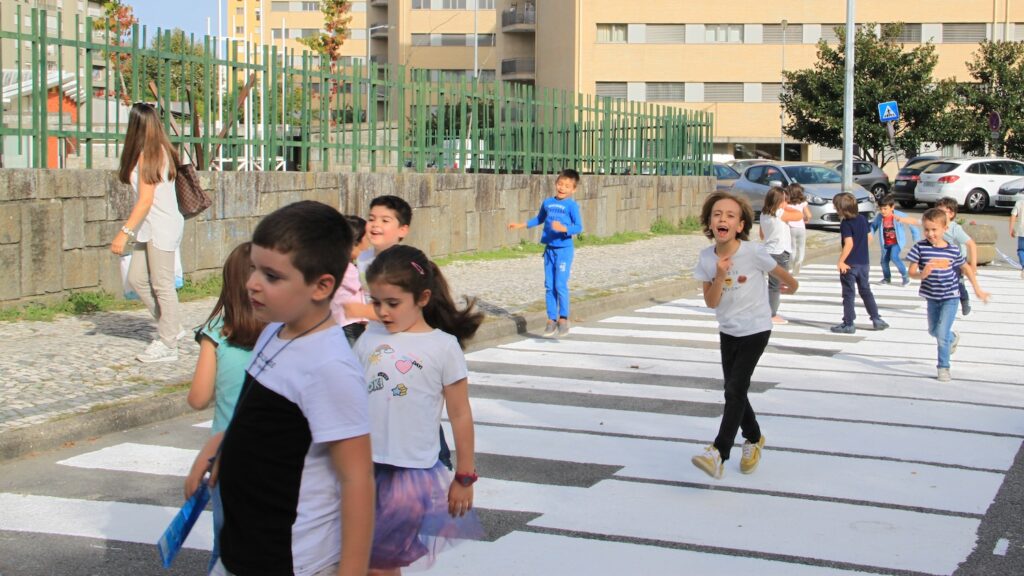
All the actions described were crucial in co-creating a project to redistribute public space in the Living Lab case study (Calouste Gulbenkian quarter). The project, aimed for 2050, allowed the community to focus on broader goals, detaching from day-to-day car dependency issues.
Filipa tested four tools to evaluate the project’s communication process: 2D plans, 3D images, a physical model, and augmented reality. After public sessions, participants completed a survey to assess their receptiveness to the project and determine which tool best helped them understand it.
While the evaluation is ongoing, early reflections show that the future-thinking strategy and Transition Management approach enabled more radical solutions. Most respondents indicated they wanted the project implemented immediately rather than waiting until 2050.
These experiments serve as short-term tests for long-term sustainable projects. By implementing and observing these changes, Filipa aims to gather data and insights that will help refine broader, more permanent urban mobility strategies to reclaim public space for pedestrians and reduce car dependency.
Alongside the experiments, the transition arenas start by finding pioneering change agents in the local community. This initial focus on already active leaders helps precisely define the problem and set ambitious goals for the case study.
Transition arenas are collaborative spaces designed to facilitate urban transformation by bringing together frontrunners. These agents are deeply committed to the transition process and possess extensive networks within the community.
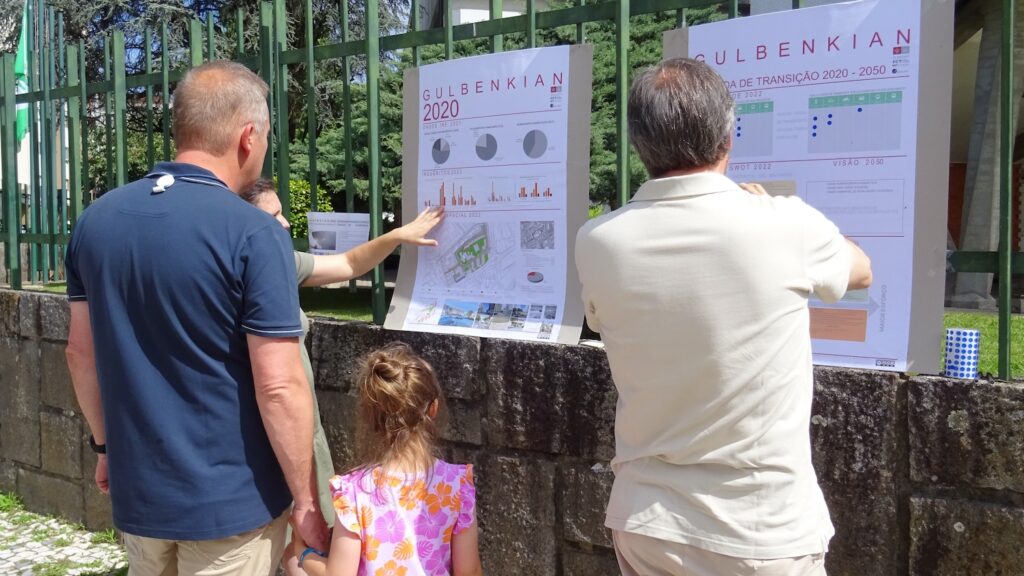
In Filipa’s approach, the selection of these agents begins with individuals who have strong communication skills and connections across various networks in Braga. While some may belong to associations, their participation in the transition arena is as individuals, free from the formal discourse of their professional profiles.
Initially, the transition arena starts with a small group of about seven people. Over time, this core group gradually expands to include more stakeholders through the networks of each agent, eventually engaging with a broader audience.
So far, the Transition Arena has had more than 100 participants.. Feedback and ideas from these participants are collected through a series of face-to-face meetings, with each group meeting six times and culminating in the publication of a local transition agenda by the Municipality of Braga.
The network meetings cover various aspects of the project. The initial discussions focus on identifying the problems within the case study and understanding the target population’s needs. Subsequent meetings use future thinking methodologies to brainstorm short-term measures and long-term goals. Technology plays a crucial role in these discussions, with 3D drawings, augmented reality, and virtual reality used to present and co-design project outcomes.
In addition to change agents and community members, researchers from different fields are heavily involved. Filipa collaborates with students and faculty from bachelor’s and master’s programmes, incorporating their thesis into her case study. This multidisciplinary approach ensures that the transition management process benefits from diverse expertise, including sociology, psychology, augmented reality, technology, and statistics.
Moreover, the methodology emphasises the importance of involving all segments of society, including the Municipality, the University and various organisations within the city. This comprehensive involvement is crucial for transitioning from the current system to a new, sustainable one. The ultimate goal is to create a resilient urban environment co-designed and supported by the entire community.
In Filipa’s opinion, one of the primary challenges is achieving consensus among the community members. Many people initially resist changes, particularly those affected by reducing the space allocated to cars. Therefore, it is crucial to demonstrate the benefits of sustainable mobility solutions and effectively communicate the results of the co-design process.
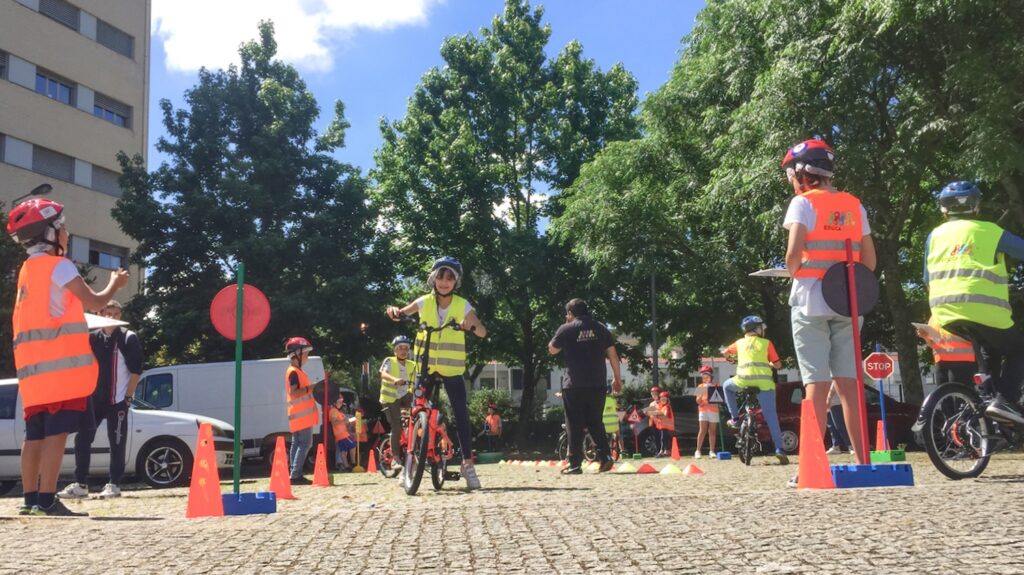
Balancing car users’ needs and preferences with the goal of promoting pedestrian and bicycle use is a delicate task. Despite Braga’s urban model being conducive to walking and cycling, 70% of the population uses cars daily, often for short trips that could be made on foot or by bike.
The major underlying issue is the cultural shift required to move away from car dependency. Changing deeply ingrained habits and attitudes towards transportation is challenging and requires sustained effort.
While focusing on improving pedestrian and bicycle infrastructure, Filipa’s project also considers the broader transportation network, inspired by Barcelona’s superblocks. The Municipality’s plans include enhancing public transportation options, such as introducing a metro bus system, to provide efficient alternatives to car travel.
By combining these strategies, Filipa aims to foster a cultural and practical shift towards sustainable urban mobility in Braga, addressing the immediate and long-term challenges of reducing car dependency.
In the last two years, Filipa’s Transition Experiments have raised awareness among the population and provided training to individuals promoting sustainable mobility. Additionally, introducing co-design processes in the Transition Experiments has been a novelty in Braga. According to Filipa, the success of these initiatives has inspired replication in other areas, such as schools adopting the transition arenas and parklets.
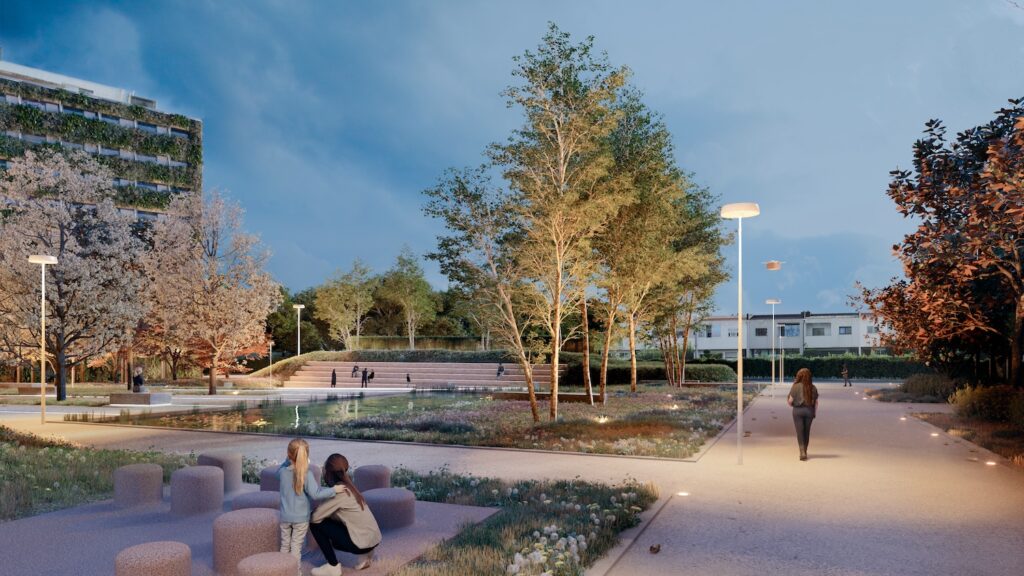
Filipa advises others embarking on similar projects to use her tested methodology, emphasising the importance of experimentation, societal empowerment, and mutual learning among academia, administration, and the community. Aligned with the Transition Management approach, this methodology promotes sustainability by creating space for new organisational forms through “learning by doing and reflecting”. This approach has been vital to achieving greater public acceptance of solutions and fostering sustainable change, such as changes in mindset, practices and organisational structures.
Looking ahead, Filipa envisions a Braga of the future that is transformed by sustainable practices. She is optimistic that Braga can transition to a more sustainable city through dissemination, replication, and scaling up of her experience. This transition will improve quality of life, reduce pollution, and increase road safety. By 2050, she hopes to see her project’s impact reflected in the cityscape, with future generations proudly recognising its contribution.
Written by Jose Rodriguez
Revised and fact checked by Filipa Corais
Photos by Filipa Corais